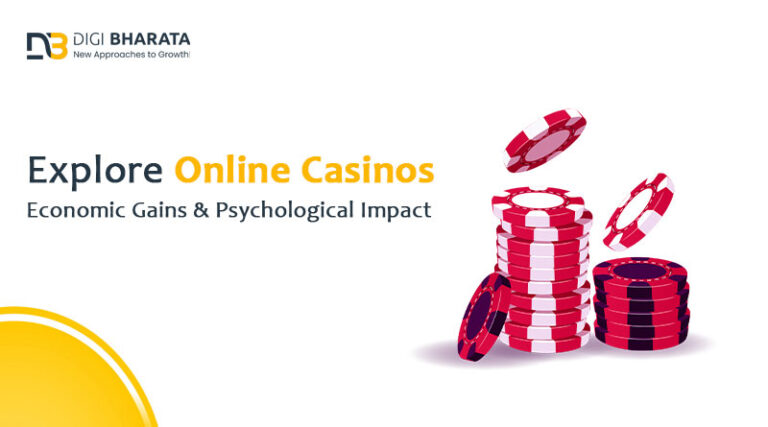Your website is the centerpiece of all your marketing efforts. It needs to be well-designed to grab customers’ attention and convey an accurate message about your business. Creating a good site requires careful consideration regarding graphics and usability features to enhance your user experience.
It’s no shock that UI and UX design can make or break a B2B website. They enhance how your customer views the company and impact their investment decision.
If you fail to address the needs of your target audience, you may find that conversions are down, user engagement is low, and customer loyalty is non-existent.
Table of Contents
What Is UI/UX in B2B Website Design?
UI/UX stands for “user interface” and “user experience” in website design. UI refers to how a human communicates with a machine. It involves all input, output, display devices, software, and control components.
Also Check: Best UX Design Principles You Must Know
UX is a user-centered design methodology within the broader Human–Computer Interaction (HCI) discipline. It encompasses multiple disciplines, including psychology, industrial design, and engineering.
B2B, or business-to-business, means that the website design focuses on other businesses rather than individual consumers. The idea behind a B2B website is to create a platform where companies can interact directly with each other and make deals.
In the context of B2B website design, UI/UX refers to the website’s design and usability from a business user’s perspective. It means that the website should be easy to navigate, intuitive to use, and provide a seamless and efficient experience for the user.
UI/UX includes all design elements that create a functional and enjoyable customer experience. The practice ensures the user can easily access your content and store their data without experiencing any errors, crashes, or frustrating anomalies. It identifies user needs, improves usability through iteration, and enhances overall user satisfaction.
Good UI/UX design in a B2B website can help to improve user engagement, increase conversions, and ultimately drive more business for the company.
6 Benefits of an Optimized B2B Website User Experience
The B2B user experience has several advantages. Let’s examine how your B2B website will benefit from an enhanced user experience.
Positive Brand Reputation and Image
Your B2B website’s design affects perception and branding. A great user experience can project a positive image of your company to potential clients and create trust among current customers.
Users are more likely to view you favorably because your website is easy to use, makes sense, and appears modern. They are more apt to do business with you because they see you as a reputable and reliable brand.
You will gain their trust, which leads to better conversion rates, increased loyalty, and longer-term customer relationships.
Also Check: Best Influencer Management Tools
Conversion Rate Increase
The conversion rate refers to the percentage of visitors to your B2B website who complete a desired goal, like signing up for a trial or purchasing an item or service.
Optimized UX and UI design enhance the conversion rate. It converts all visitors into paying customers. There is less friction, and the website design is to convert browsers into sales leads.
A great B2B user experience reduces the bounce rate or frequency of visitors who leave your site immediately after viewing it. It makes them stay for more, which improves your conversion rate in many ways.
Customized User Experience and Content
B2B UI/UX to meet the needs of particular clients and customer groups. It offers more personalized service, straightforward navigation, and access to professional-grade content by providing rich content and tailoring it to each visitor’s needs.
Excellent UI/UX enables customers to find what they are looking for without wasting too much time. They can customize their preferences, conduct specific research based on their needs, and access information relevant to them as quickly as possible.
Improved Usability
A B2B website’s usability refers to its complexity. It is the ease of use and immersive experience that a visitor has while navigating the site. A well-designed B2B user experience saves time and reduces the learning curve. It enables customers to complete tasks faster at less cost.
As a B2B website’s complexity increases, it becomes difficult to use, resulting in decreased conversion rates. A great user experience improves usability by enhancing accessibility and making things easier for users to interact with your website.
Tailored Webpage Displays and User Controls
An optimized B2B user experience includes excellent user controls and intuitive displays. It offers tailored webpage displays, fits your content and design to the screen size of mobile devices, and allows users to customize their settings.
A great B2B site will enable users to change the look and feel of their homepage and specific pages. It also allows them to save articles, notes, and bookmarks for easy access.
Users can easily access content related to a particular industry they are interested in exploring. The customization feature of an excellent B2B website will give them more options to choose from and quickly get back to the conversation at hand.
Improved Search Engine Optimization
The SEO of a B2B website gets impacted by how it looks, its content, and its user experience. Search engines like Google use a website’s structure, tags, and keywords to determine where they are ranking.
An optimized B2B site has all the right words and phrases in its content, so search engines can easily understand the details of their search. They can also easily find your website using intuitive controls such as navigation menus and sidebar dropdowns.
4 Effects of Poor User Experience in B2B Websites
If your B2B website has a bad user experience, it can damage your business. Here are some of the effects of having a poor user experience on a B2B website.
Increased Bounce Rate or Frustration Rate
The bounce rate or frustration rate is the frequency of visitors who leave your site immediately after viewing it. The bounce rate correlates to the user experience and performance of the B2B website design.
A B2B site with a poor user experience has a higher bounce or frustration rate. Viewers are more frustrated when they finish their first page and leave the site immediately after visiting.
Lost Sales Leads
A bad B2B user experience leads to fewer sales leads, which identifies by the total number of qualified prospects who express interest in your product, service, or brand.
The number of sales leads connected to your website is directly correlated to your conversion rate and user experience of your B2B website design. The more difficult it is for customers to buy from your website, the less likely they can do any business with you.
Also Check: LinkedIn Email Extractor Tools
Decreased Conversion Rates
A great user experience leads to increased conversion rates. Visitors to your website are more likely to buy, sign up for a trial, or get in touch with you by filling out a web form. Their customer experience ultimately influences the success of your business.
A poor B2B user experience harms the conversion rate of your website. The more difficult it is for visitors to complete the desired action on your site, the less likely they will do business with you.
Lost Branding Opportunities and Reputation
A poor user experience on your B2B website can cost you great opportunities for branding and building a good reputation with customers. Many potential leads that visit your site will never try your product, service, or brand.
A poor user experience hurts your branding efforts and the general perception of your business. Visitors will not enjoy the functionality of your B2B website, and visitors will lose interest in exploring it more.
Final Thoughts
UI/UX design and optimization can increase the organic traffic to your site and give you more leads and sales, and improve brand visibility. A great user experience is critical for B2B websites because it offers users a clear idea of your business.
It holds value for potential customers who want to know what they can rely on your website’s functionality.






















+ There are no comments
Add yours